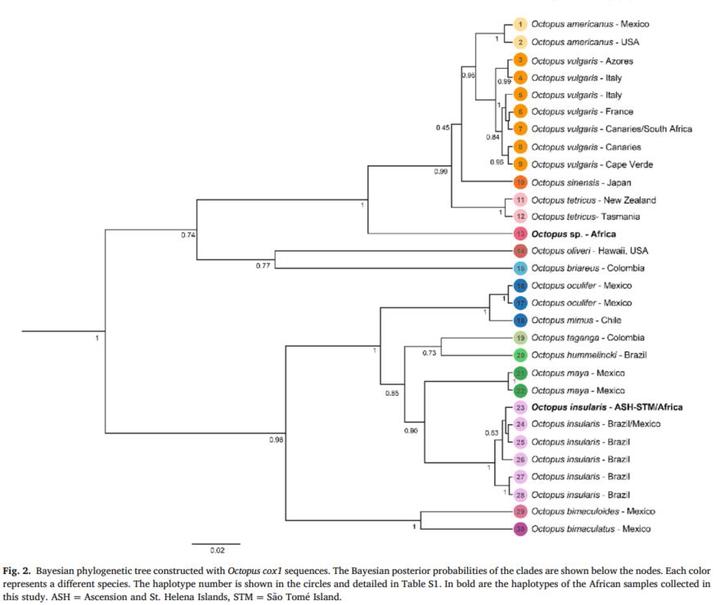Molecular data, ecological niche, and dispersal models reveal a Trans-Atlantic shallow-water octopus species

Abstract
The tropical Octopus insularis is a shallow-water species widely distributed in the western Atlantic. Recent studies of niche models have identified suitable habitats for its settlement also on the east coast of the Atlantic.Considering the pelagic larval period and the high tolerance of this species to environmental variations, this study aimed to analyze the possibility of O. insularis occurrence in the West Atlantic (Sao Tome Island) through molecular analyses, dispersion, and niche models. The molecular analyses were performed using fragments of 481 bp of the mitochondrial gene (cox1) from three muscle samples collected in S˜ ao Tom´e Island. The O. insularis long-range connectivity between South America and Western Africa was analyzed using a Lagrangian particle tracking model. Additionally, O. insularis records across its entire known distribution were applied to run the ecological niche model (ENM) using the Maxent algorithm. The Bayesian phylogenetic reconstruction showed that two of the three octopus sequences from Sao Tome island (Central-Western Africa) belong to a monophyletic and well-supported O. insularis clade. The third octopus sample revealed a new species related to the clade with the Octopus vulgaris species complex. The dispersal models pointed out that passive particles could potentially reach the seamounts region at Africa coast via oceanic currents (mainly the North Equatorial Countercurrent) from Sao Pedro and Sao Paulo archipelago (Central-Western Region of the Atlantic) in a period of ~30–60 days. This suggests that Sao Pedro and Sao Paulo archipelago could act as a potential source of paralarvae to Western Africa, although we hypothesize that this connection was more common during the Pleistocene, when sea level was around 120 m lower. In addition to the already known areas of O. insularis occurrence, the ENM pointed suitable habitats to the octopus settlement from Guinea-Bissau down to Equatorial Guinea and Gabon, and African Islands, such as Sao ˜ Tom´e and Príncipe. The new record of O. insularis in Africa raises important questions regarding regional fisheries management. Considering that O. insularis is highly tolerant to environmental variations and very adapted to warm shallow waters, there is a possibility that octopus fisheries stocks on the African coast have a mixed composition (O. vulgaris, O. insularis, and Octopus sp.) and therefore the fisheries must follow management measures suitable for each species. In addition, further studies should be carried out in order to characterize and describe the potential new octopus species found only in Sao Tome Island according to our genetic survey.